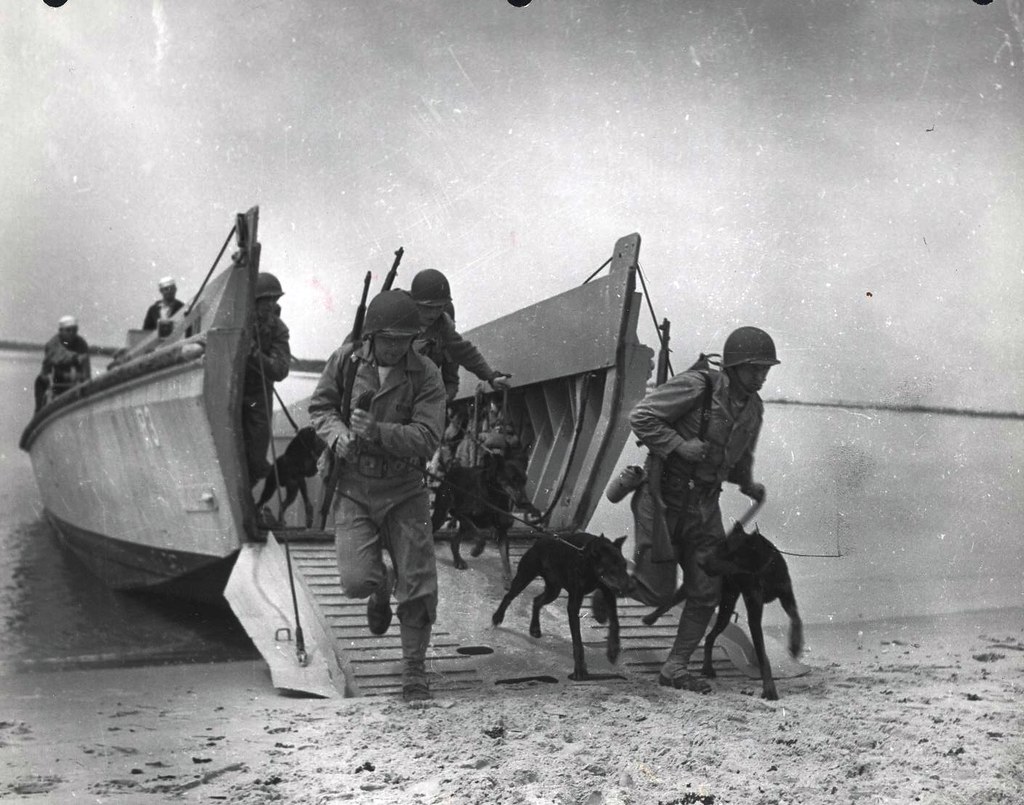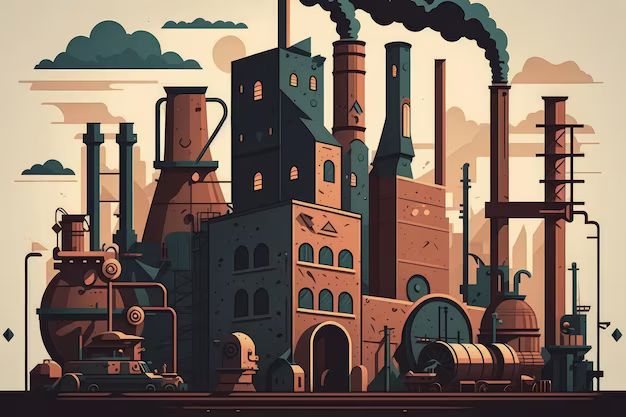Alright, buckle up, time travelers, because we’re about to take a groovy trip back to the 1970s! Forget your TikTok trends and streaming binges for a moment, and imagine a time when news felt like it was playing out right in your living room, defining conversations, influencing fashion, and shaping futures. The ’70s were a truly wild ride, a decade of profound shifts that reshaped societies and sent shockwaves across the globe.
This wasn’t just a period of bell bottoms and disco balls, though we totally love those too! The ’70s stood as a “pivot of change” in world history, a time when global dynamics were utterly transformed. Economic upheavals, political conflicts, and social progressive values were all part of the daily narrative, constantly popping up in the newspapers and evening news broadcasts.
So, if you thought you knew the ’70s, think again! We’re here to highlight 12 monumental events and pervasive trends that were so deeply ingrained in the fabric of the decade, they practically became honorary members of your household. These weren’t just headlines; they were the backdrop to everyday life, influencing everything from the economy to your favorite dance moves. Let’s dive into the first half of these unforgettable phenomena!

1. **The Vietnam War’s Tumultuous End**For what felt like an eternity, the Vietnam War cast a long, somber shadow over the early 1970s, a constant presence in public discourse and family discussions. Even if you weren’t directly involved, the news of the nation’s engagement, brought to light by leaks from The New York Times, kept the conflict at the forefront of everyone’s minds. It was an era of intense political pressure, pushing for a resolution that seemed to take forever to arrive.
Finally, in 1973, America officially withdrew its forces, a moment many had longed for. However, the story didn’t end there. The conflict culminated dramatically with the Fall of Saigon in 1975, leading to large-scale evacuations of South Vietnamese citizens, an image etched into the collective memory of the decade. The unconditional surrender of South Vietnam on April 30, 1975, marked a definitive end to this long and brutal chapter.
By the following year, Vietnam was officially declared reunited, closing a chapter of immense sacrifice and political turmoil. The war’s conclusion represented a massive shift in global power dynamics and left an indelible mark on the psyche of an entire generation, making it feel like a family member you just couldn’t ignore, even if you wanted to.
Read more about: A Perilous Miscalculation: When Pirates Attacked the Unyielding Power of Warships and Faced Swift Defeat

2. **The Stranglehold of the 1973 Oil Crisis**Suddenly, it felt like everyone was talking about gas prices – and not in a good way! The 1973 oil crisis slammed into the developed world like a financial wrecking ball, causing widespread economic havoc. It wasn’t just a news item; it was a daily reality that affected commutes, household budgets, and the general sense of economic stability across industrialized countries.
This crisis was directly triggered by oil embargoes imposed by the Organization of Arab Petroleum Exporting Countries (OAPEC), creating a scarcity that sent prices skyrocketing. This period marked the very first instance of what economists would later call stagflation – a truly baffling combination of economic stagnation and persistent inflation. It was a brand-new, unwelcome economic phenomenon that bewildered governments and consumers alike.
While the developing world, thanks to the Green Revolution, initially saw steady progress in their economies, even they couldn’t escape the gravitational pull of the oil crisis. Their economic growth slowed considerably, demonstrating just how interconnected the global economy had become since World War II. The lingering effects of this crisis fundamentally altered economic policies, sparking a shift away from Keynesian theory towards neoliberal approaches, a profound change that would echo for decades.

3. **Watergate and President Nixon’s Dramatic Exit**Could anything be more dramatic than a president resigning in disgrace? The Watergate scandal was the political drama that just kept on giving, dominating headlines and conversations for years. It was a slow-burn investigation that captivated a nation, unraveling layer after layer of political intrigue and misconduct. Everyone had an opinion, and every new revelation felt like a bombshell dropped right into your evening news bulletin.
As the allegations mounted and the threat of impeachment loomed large, United States President Richard Nixon ultimately resigned from office on August 9, 1974. It was an unprecedented moment in American history, a stunning conclusion to a saga that had tested the very foundations of democratic trust. The image of President Nixon doing the V for Victory sign as he departed the White House after his resignation became an iconic, if bittersweet, symbol of the era.
The resignation sent shockwaves around the world, fundamentally altering how people viewed political accountability and governmental transparency. It wasn’t just a political event; it was a cultural moment that forced a reckoning with power and its potential abuses. The fallout from Watergate became a constant reference point, a cautionary tale that truly felt like a part of every American home’s unspoken curriculum.
Read more about: Beyond the Disco: Unearthing the Pivotal Events and Enduring Legacies That Shaped the 1970s

4. **The Rhythmic Invasion of Disco Culture**Okay, enough with the heavy stuff for a moment! Let’s talk about the beat that defined a generation’s nightlife: Disco! Suddenly, everywhere you turned, there were glittering lights, infectious basslines, and people just wanting to dance. The popularity of the disco music genre and its vibrant subculture truly peaked during the mid-to-late 1970s, making it impossible to escape its dazzling influence.
From roller rinks to dance floors, from radio waves to TV shows, disco was omnipresent. It wasn’t just music; it was a lifestyle, a fashion statement, and a cultural phenomenon that encouraged everyone to let loose and feel the rhythm. The glamour, the energy, the sheer fun of it all made disco a central character in the ’70s narrative, a joyous escape from the more serious headlines of the day. It felt like every Saturday night, the whole neighborhood was getting down to the same infectious beats.
This vibrant era of disco offered a much-needed sense of celebration and unity, bringing people together on dance floors across the globe. It was engaging and fun, reflecting the lighthearted and playful tone that often characterized the popular culture of the time. Whether you loved it or loved to hate it, disco was undeniably everywhere, an iconic sound that truly “lived in our house” through our stereos and our social lives.
Read more about: The Beat Goes On: 12 Artists and Genres That Defined the Revolutionary 80s Music Scene

5. **The Iranian Revolution: A Global Seismic Shift**Just as the decade was winding down, a monumental event in Iran sent ripples of change across the entire world: the Iranian Revolution of 1979. This wasn’t just a local uprising; it was a profound transformation that grabbed international headlines and sparked intense debate. Suddenly, a nation that had been an autocratic pro-Western monarchy under Shah Mohammad Reza Pahlavi underwent a complete ideological overhaul.
The revolution saw the Shah ousted from power and replaced by an Islamic theocracy under the charismatic leadership of Ayatollah Ruhollah Khomeini. This dramatic shift was a global seismic event, signaling the rise of a new form of political and religious power on the international stage. Political tensions in Iran exploded, fundamentally altering the Middle East’s geopolitical landscape and global perceptions of the Muslim faith.
Distrust between the new revolutionary government and Western powers quickly escalated, leading to the infamous Iran hostage crisis on November 4, 1979. Sixty-six diplomats, primarily from the United States, were held captive for an agonizing 444 days, an event that became a harrowing, daily fixture on television screens. This revolution introduced a new dynamic to global relations, as the Shi’a theocracy declared itself hostile to both Western democracy and what it termed “godless communism,” impacting global attitudes for years to come.

6. **The Cold War’s Shifting Sands: Détente and Invasion**Throughout the ’70s, the Cold War continued to be an ever-present backdrop, a geopolitical reality that shaped international relations and domestic anxieties. Yet, this decade saw a fascinating, albeit temporary, cooling of superpower tensions between the United States and the Soviet Union. The bellicose confrontations of the 1950s and ’60s gave way to a policy known as détente.
Détente was all about lessening the chance for direct conflict, promoting the idea that the world’s problems could be resolved at the negotiating table. Both superpowers even endorsed nuclear nonproliferation, a hopeful sign of easing tensions. As part of this new approach, the US also restored ties with the People’s Republic of China in 1972, partially as a strategic counterweight against Soviet expansionism, adding another layer of complexity to the global chess game.
However, this period of relative calm was not destined to last. While the ’70s were largely considered a ‘golden age’ of stability in the USSR, with relative well-being masking underlying economic issues, the policy of détente abruptly ended. The Soviet invasion of Afghanistan at the close of 1979 shattered any illusion of lasting peace, reigniting Cold War hostilities and setting a tense stage for the coming decade. This sudden shift reminded everyone that the world’s biggest power struggle was still very much ‘in our house,’ influencing global stability and the future of nations.
Okay, so we’ve grooved through the first half of the ’70s, witnessed political earthquakes, and danced to the beat of change. But believe us, the latter half of this iconic decade didn’t slow down one bit! If anything, it cranked up the dial, bringing us groundbreaking tech, profound geopolitical shake-ups, and some truly heartbreaking moments that left an indelible mark on our collective consciousness. These next six events were not just news stories; they were cultural touchstones that genuinely felt like they were happening right in our lives, shaping the world we know today. Let’s dive in!
Read more about: The 1970s: A Decade of Disappearance – 12 Shocking Moments When Leaders and Eras Vanished From the World Stage

7. **The Dawn of Home Computing and Quantum Leaps**While the ’70s often conjure images of bell-bottoms and platform shoes, this decade was quietly laying the groundwork for a technological revolution that would utterly transform our lives. We’re talking about the birth of personal computing and mind-bending scientific breakthroughs that, by the latter half of the decade, were setting the stage for the digital age we now inhabit. The idea of a computer in every home? That dream started here, folks, and it felt like science fiction becoming reality right before our eyes.
It all began with the appearance of the first commercial microprocessor, the Intel 4004 in 1971. This tiny chip sparked a profound transformation, moving computing units from colossal, rudimentary machines confined to labs and corporate offices into the realm of portability and, eventually, home accessibility. Imagine going from room-sized computers to the beginnings of something you could actually put on a desk! It was a massive leap, pushing the boundaries of what was thought possible and hinting at a future where technology would be personal.
Beyond the nascent world of personal tech, the ’70s also saw colossal strides in fundamental science. Specifically, the field of physics experienced a consolidation of quantum field theory by the end of the decade, primarily driven by the confirmation of quarks’ existence and the detection of the first gauge bosons, like the Z boson and the gluon, in addition to the photon. This period was pivotal in shaping what was christened in 1975 as the Standard Model, fundamentally changing our understanding of the universe’s most basic building blocks. These intellectual breakthroughs, though complex, hinted at a deeper understanding of reality, making the era feel vibrantly alive with discovery.

8. **Cambodia’s Shadow: The Khmer Rouge and Genocide**Amidst the groovy tunes and technological marvels, the latter half of the 1970s bore witness to one of humanity’s most harrowing chapters: the Cambodian genocide. This was a tragedy of unimaginable scale, unfolding in Southeast Asia, far from many Western living rooms, yet its horror slowly seeped into global consciousness, leaving an unforgettable stain on the decade. It was a stark reminder that while some parts of the world were dancing, others were enduring profound suffering.
On April 17, 1975, the Khmer Rouge, a communist group led by the enigmatic Pol Pot, captured Phnom Penh, Cambodia’s capital, two years after America had halted its bombings of their positions. What followed was a radical, brutal attempt to establish an agrarian society, forcing city dwellers into the countryside to clear jungles and work in collective farms. This wasn’t just a political shift; it was a complete societal overhaul enforced with extreme violence and ideological zeal, instantly reshaping the lives of millions.
The regime targeted anyone perceived as a threat to its vision, including Buddhist priests, monks, individuals who spoke foreign languages, those with any form of education, or even people who wore glasses. Torture and systematic killings became widespread, leading to the deaths of as many as 3 million people between 1975 and 1979. This horrific period of state-sponsored mass murder only came to an end when Vietnam invaded the country at the start of 1979, overthrowing the Khmer Rouge and installing a satellite government. The memory of this genocide became a profound, heartbreaking element of the ’70s, demanding global reflection on human cruelty and resilience.

9. **A Handshake for Peace: The Camp David Accords**Just when it felt like the Middle East was perpetually locked in conflict, the late ’70s delivered a moment of profound hope and a groundbreaking geopolitical realignment. We’re talking about the Camp David Accords in 1978, an event that didn’t just make headlines; it fundamentally altered the dynamics between two historically warring nations and resonated as a powerful symbol of diplomacy’s potential across the globe. It was a beacon of progress that truly felt like a collective sigh of relief for many.
In a dramatic diplomatic maneuver, Israeli Prime Minister Menachem Begin and Egyptian President Anwar Sadat, with the mediation of U.S. President Jimmy Carter, met at Camp David. The intense negotiations led to the signing of two framework agreements on September 17, 1978. These accords were a monumental achievement, paving the way for the 1979 Egypt–Israel peace treaty, the first such agreement between Israel and an Arab nation. It was a historic moment, breaking decades of animosity and setting a precedent for future peace efforts.
The image of Begin and Sadat shaking hands became an iconic snapshot of the decade, symbolizing a tangible step towards stability in a volatile region. Their efforts were recognized with the 1978 Nobel Peace Prize, a testament to the immense significance of their breakthrough. This event demonstrated that even the most entrenched conflicts could, with enough political will and courageous leadership, find pathways to resolution, making it a truly unforgettable and hopeful turning point in the ’70s narrative that influenced global attitudes towards peacemaking.

10. **Jonestown: The Cult’s Tragic End**Sometimes, the news hits you like a gut punch, and that’s precisely how the Jonestown Massacre felt in November 1978. This wasn’t just a story; it was a haunting, heartbraking human tragedy that revealed the dark side of charismatic leadership and collective delusion. The images and reports from Guyana were chilling, creating a sense of collective horror that truly felt like it was playing out in our own communities, leaving a lasting scar on the ’70s.
In the remote jungles of Guyana, Reverend Jim Jones had led several hundred followers from his People’s Temple in California to establish a utopian Marxist commune named Jonestown. Initially envisioned as a sanctuary, allegations of corruption, mental, sexual, and physical abuse by Jones, and the denial of followers’ right to leave, began to surface. It was a sinister unraveling hidden from plain sight, making the eventual revelations all the more shocking and tragic.
The horror escalated when a Congressional committee and journalists visited Jonestown to investigate. On November 18, 1978, as the visitors and several defectors attempted to depart, they were attacked and shot by Jones’ guards at the airport, resulting in the death of Congressman Leo Ryan, among others. Following this atrocity, the demented Jones ordered everyone in the commune to commit suicide. Over 900 people, approximately a third of whom were children, died after drinking or being forced to drink cyanide-laced fruit punch. Jones himself died from a self-inflicted gunshot wound. The sheer scale and horrific nature of the deaths made Jonestown an indelible and devastating event, forever etched into the ’70s.

11. **China’s Quiet Revolution: Post-Mao and Opening Up**While the world was reeling from oil crises and dancing to disco, a quiet but monumental revolution was taking place in Asia, particularly in the People’s Republic of China. The latter half of the ’70s saw profound geopolitical realignments here, transforming a nation that had long been isolated and setting it on a new trajectory that would impact the global stage for decades. It felt like watching a sleeping giant begin to stir, promising massive future changes.
Following visits by Henry Kissinger in 1971, U.S. President Richard Nixon’s historic visit in 1972 began the process of restoring relations between the two countries, though formal diplomatic ties weren’t fully established until 1979. This thawing of relations was a major geopolitical shift. However, the true internal transformation began after the deaths of Chairman Mao Zedong and Premier Zhou Enlai in 1976, which marked the end of the Cultural Revolution and ushered in a new, uncertain era for China.
After a brief period under Mao’s chosen successor, Hua Guofeng, Deng Xiaoping emerged as China’s paramount leader. Deng began to strategically shift the country towards market economics and away from rigid, ideologically driven policies. His visit to the US in 1979 symbolized this new direction, signaling China’s intent to engage more with the international community and pursue economic development. This shift, occurring late in the decade, represented a profound reorientation of one of the world’s largest nations, fundamentally altering global power dynamics and becoming a defining geopolitical moment of the late ’70s.

12. **The Tenerife Air Disaster: Aviation’s Darkest Day**Even amidst the political dramas and cultural shifts, some events stand alone for their sheer, shocking impact, and the Tenerife airport disaster in March 1977 was undeniably one of them. This wasn’t a war or a revolution, but a catastrophic human tragedy that became a stark, unforgettable lesson in aviation safety. The news of this event sent shockwaves globally, reminding everyone of the fragility of human endeavor and the devastating consequences of error. It felt like the entire world held its breath in disbelief.
The disaster occurred on the runway at Los Rodeos Airport in Tenerife, Canary Islands, Spain, when two Boeing 747s – a KLM aircraft and a Pan Am aircraft – collided in heavy fog. The conditions were treacherous, reducing visibility to almost nothing. The KLM pilot, mistaking an instruction for takeoff clearance, initiated his roll while the Pan Am plane was still on the runway, instructed to exit at an earlier taxiway but missed it in the poor visibility.
The collision resulted in a horrific inferno, claiming the lives of 583 people. It remains, to this day, the worst aviation disaster on record. The magnitude of the loss was staggering, and the tragedy spurred immediate, widespread changes in aviation protocols, communication standards, and cockpit procedures worldwide. It was a heartbreaking end to many lives, but its lessons forever reshaped how we fly, making it a profoundly impactful and somber event that etched itself into the memory of the late 1970s and influenced global travel safety for generations.
So there you have it, a whirlwind tour through the ’70s, a decade that truly earned its reputation as a “pivot of change.” From the shifting sands of global politics and economic upheaval to the rhythmic pulse of disco and the quiet hum of emerging technology, these 12 events didn’t just happen; they permeated our homes, shaped our conversations, and left an indelible mark on the collective psyche. They were the stories that played out alongside our own lives, forever defining a truly unforgettable era. The ’70s taught us that history isn’t just a series of dates in a textbook; it’s the lived experience, the daily headlines, and the cultural currents that shape who we are and where we’re going. And boy, what a ride it was!




